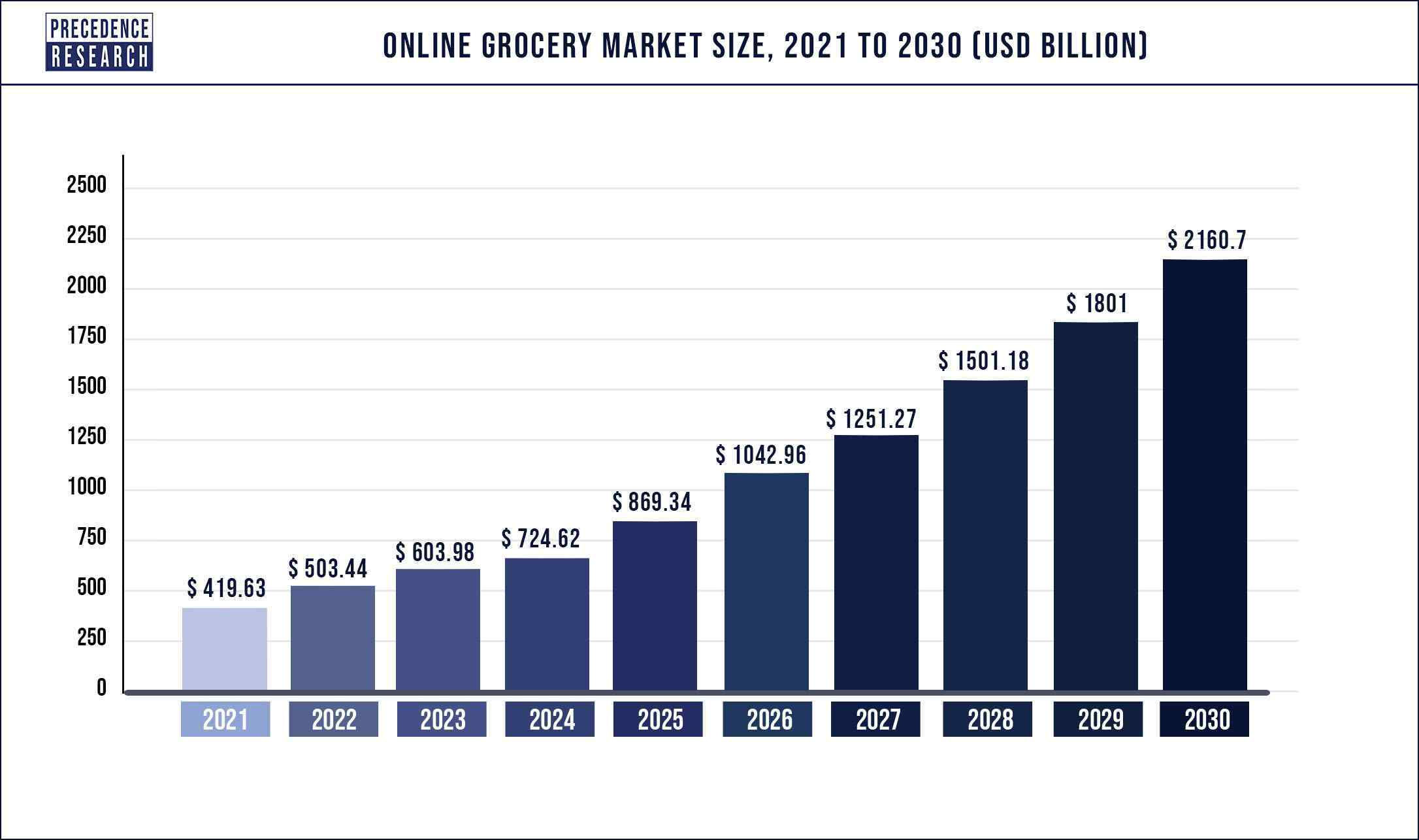The Evolution of Online Grocery Shopping in the United States: Trends and Insights
It is with utmost joy that we embark on a journey through the interesting subject of The Evolution of Online Grocery Shopping in the United States: Trends and Insights. We’ll share valuable information and offer new ideas to the readers.
Video about The Evolution of Online Grocery Shopping in the United States: Trends and Insights
The Evolution of Online Grocery Shopping in the United States: Trends and Insights

The COVID-19 pandemic has accelerated the growth of the online grocery shopping market in the United States, transforming the way consumers purchase food and household essentials. In recent years, online grocery shopping has become increasingly popular, driven by advancements in technology, changing consumer behavior, and the convenience of shopping from the comfort of one’s home.
In this article, we will explore the trends and insights shaping the online grocery shopping landscape in the United States, including the market size, growth drivers, consumer behavior, and the strategies of major players in the industry.
Market Size and Growth
The online grocery shopping market in the United States has experienced rapid growth in recent years. According to a report by Statista, the market size was estimated to be around $14.2 billion in 2020 and is projected to grow to over $38.2 billion by 2025, at a compound annual growth rate (CAGR) of 21.5%.
The growth of online grocery shopping is driven by several factors, including:
- Increased adoption of digital technologies: The widespread use of smartphones, tablets, and laptops has made it easier for consumers to access online grocery stores and make purchases.
- Changing consumer behavior: Consumers are seeking convenience and flexibility in their shopping experiences, and online grocery shopping provides them with an easy way to shop from the comfort of their homes.
- Growing demand for home delivery: The COVID-19 pandemic has accelerated the demand for home delivery, and online grocery shopping provides consumers with a convenient way to have their groceries delivered to their doorstep.
Consumer Behavior
Consumer behavior plays a significant role in shaping the online grocery shopping market in the United States. Here are some key insights into consumer behavior:
- Demographics: Online grocery shoppers are predominantly urban, educated, and have higher incomes. According to a report by the Food Marketing Institute, online grocery shoppers are more likely to be female, have a household income of over $75,000, and have a college degree.
- Age: Younger generations, such as millennials and Gen Z, are more likely to shop online for groceries, while older generations, such as baby boomers, prefer traditional brick-and-mortar stores.
- Frequency of shopping: Online grocery shoppers tend to shop more frequently than traditional grocery shoppers, with 55% of online grocery shoppers purchasing groceries online at least once a week.
- Preferred formats: Online grocery shoppers prefer the convenience of having their groceries delivered to their doorstep, with 73% of online grocery shoppers choosing home delivery as their preferred format.
Key Players and Their Strategies
Several major players are shaping the online grocery shopping market in the United States. Here are some of the key players and their strategies:
- AmazonFresh: AmazonFresh is a same-day grocery delivery service that offers a wide selection of fresh produce, meat, dairy products, and other household essentials. AmazonFresh has partnered with local grocery stores and retailers to expand its offerings and improve its delivery times.
- Walmart Grocery: Walmart Grocery is a grocery delivery and curbside pickup service that offers a wide selection of fresh produce, meat, dairy products, and other household essentials. Walmart Grocery has partnered with Uber and Lyft to offer same-day delivery to its customers.
- Instacart: Instacart is a grocery delivery and pickup service that partners with local grocery stores and retailers to offer a wide selection of fresh produce, meat, dairy products, and other household essentials. Instacart has expanded its services to over 5,500 cities and towns across the United States.
- Peapod: Peapod is an online grocery shopping platform that offers a wide selection of fresh produce, meat, dairy products, and other household essentials. Peapod has partnered with Stop & Shop, a grocery store chain, to expand its offerings and improve its delivery times.
Challenges and Opportunities
Despite the growth of online grocery shopping, there are several challenges and opportunities that retailers and consumers must navigate:
Closure
Thus, we hope this article has highlighted key aspects of The Evolution of Online Grocery Shopping in the United States: Trends and Insights. We hope you found this article insightful and beneficial. Stay tuned for the next one!.